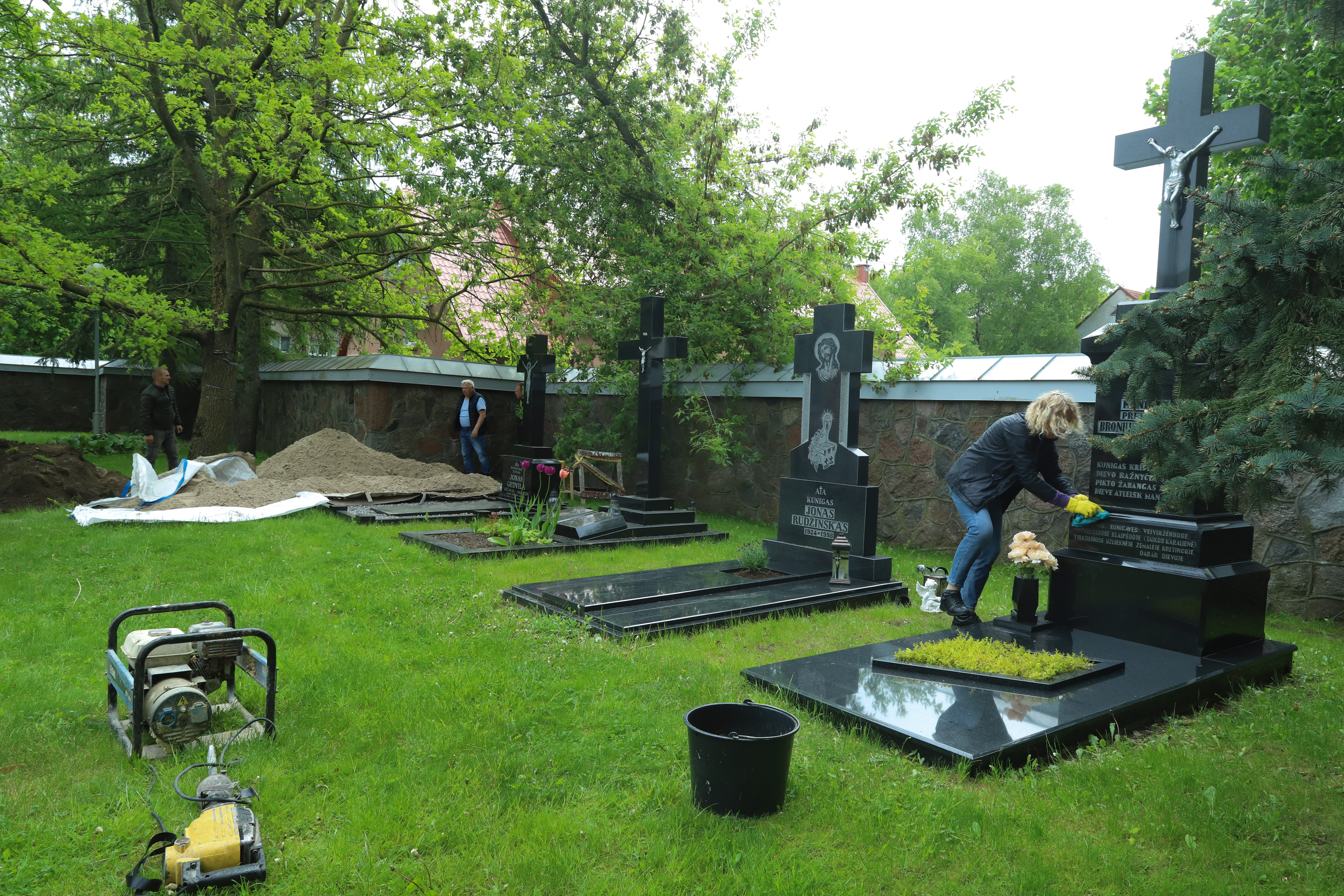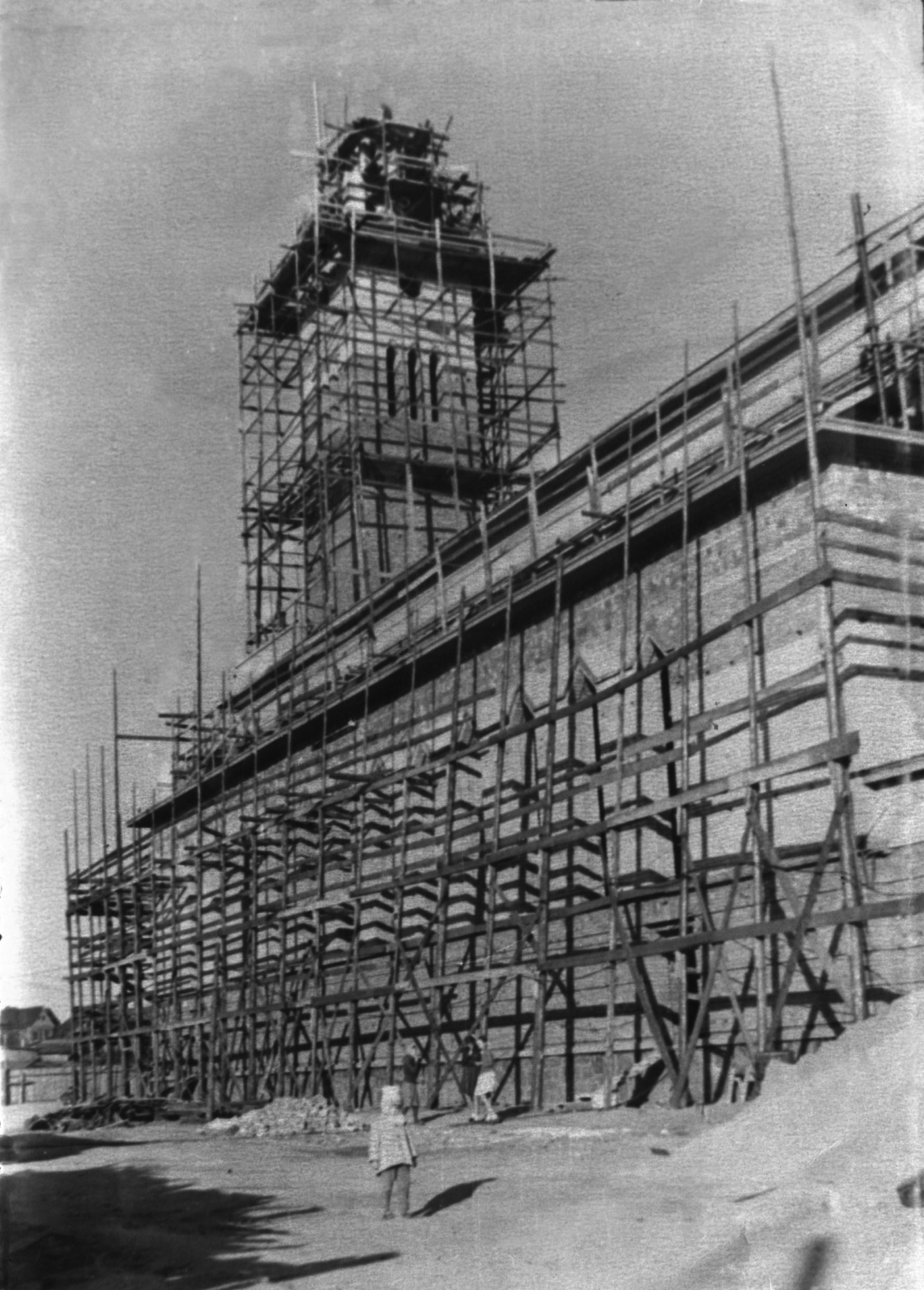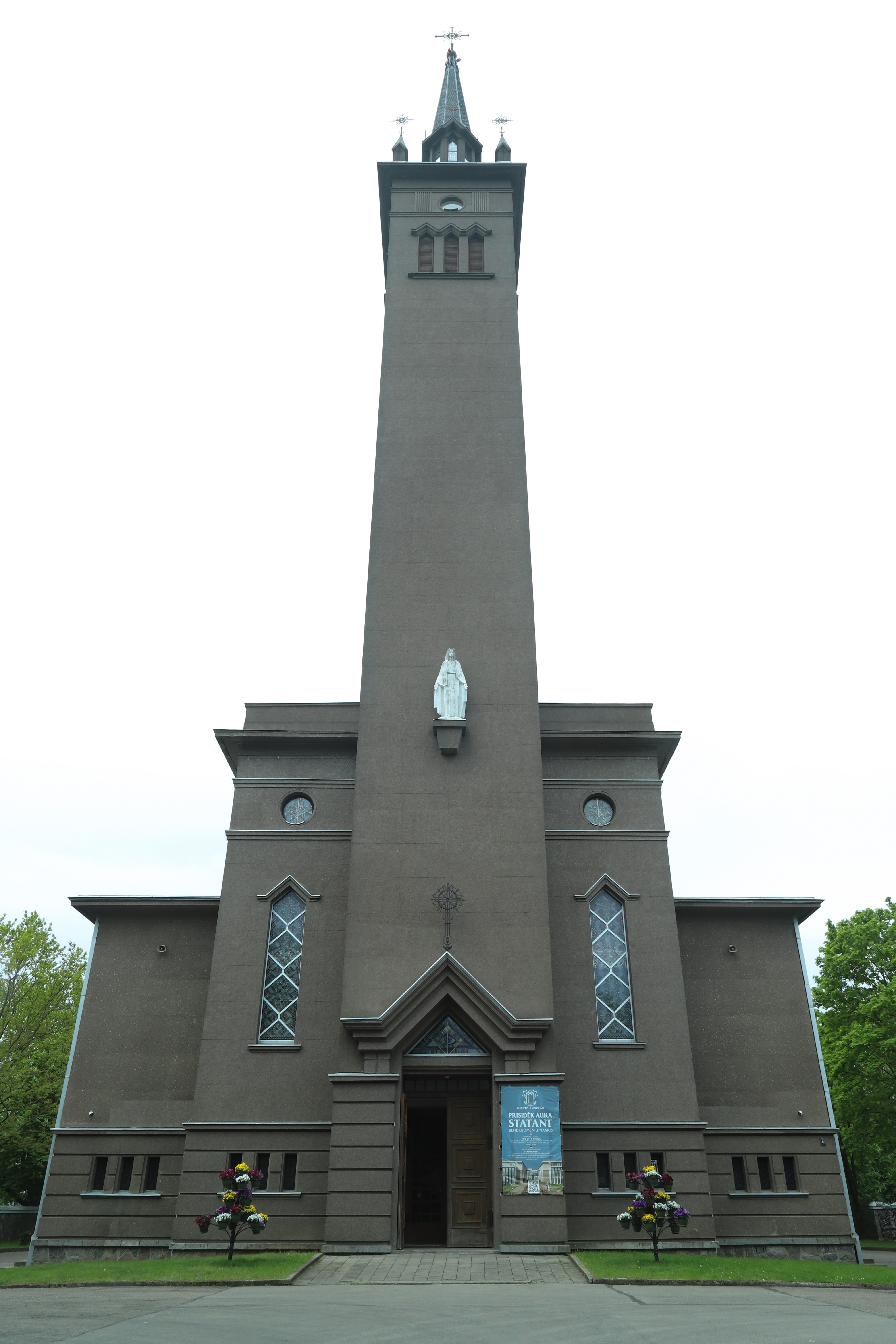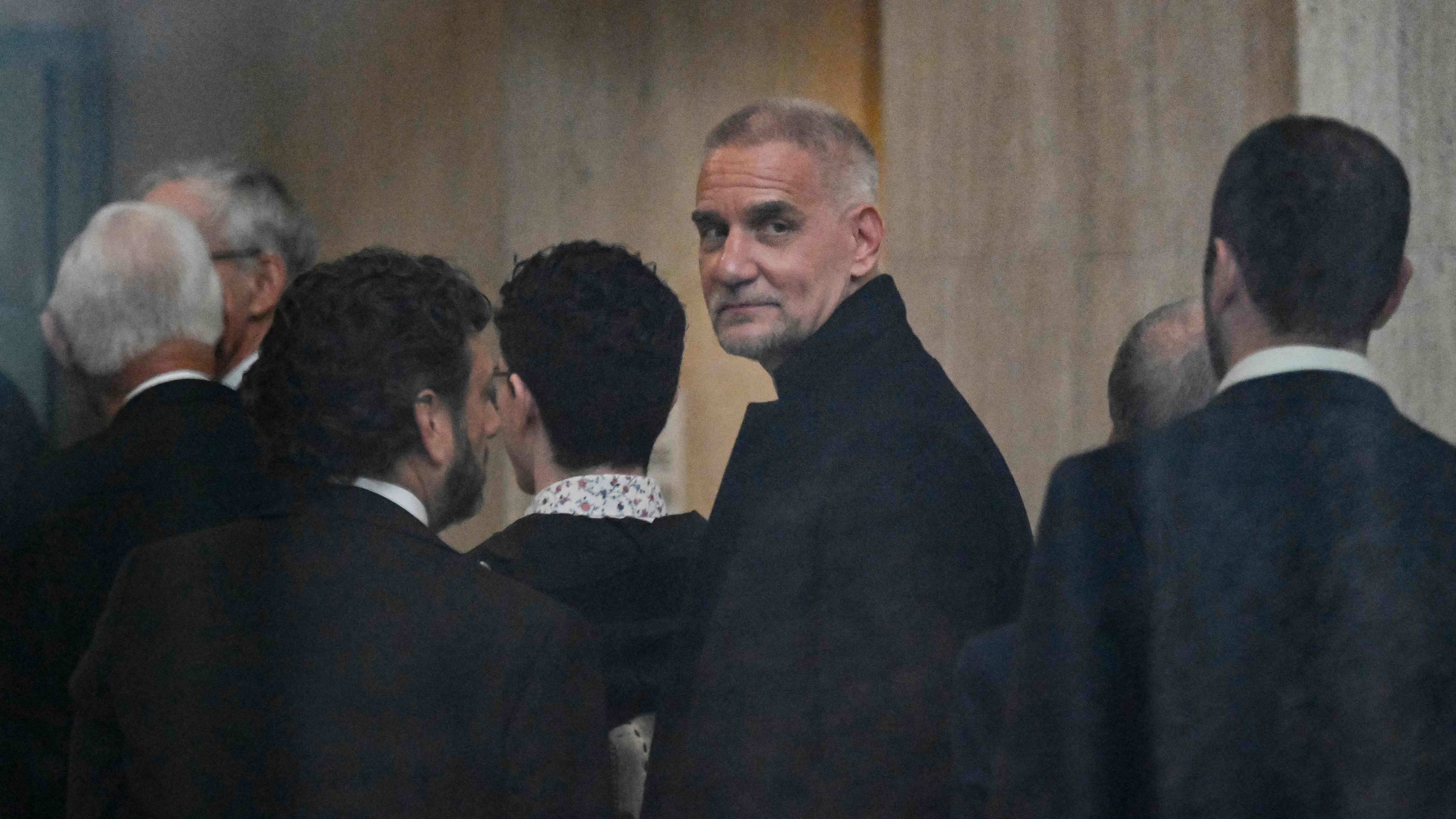The famous priest will rest in the churchyard of the church

“To love – sacrifice”
On December 31 this year, B. Tališis would have been 97 years old.
Originating from Kretinga district, the future clergyman graduated from Kretinga Gymnasium in the post -war period.
Despite the fierce anti -religious repression of the occupation authorities, then the twenties decided to choose the clergyman and joined the Kaunas Interdisciplinary Seminary.
The then Rector of the Seminary, B. Talaiis, described it as cheerful, sensual, hardworking, dutiful, worship, with a tendency to music, good hearing and health.
After the seminary graduation, 1952 On September 23, B. Tališis, Bishop of Panevėžys Bishop Kazimieras Palisis, was consecrated as a priest and appointed to the Telšiai Diocese.
Priest Bernard, the priest, to commemorate the priesthood celebrations and his first sacrifice Mass, chose the prophetic slogan: « To love – sacrifice! », As if to feel that he was a great challenge in the near future.
During the long age of the priesthood, B. Tališis served in many parishes of the Telšiai Diocese. 1953-1962. Was Tauragė, Kretinga, Klaipėda, Rietavas parishes.
From 1962 April 1 until 1963 June 28th. A priest’s certificate was deprived of B. Talaišis. At that time he worked as an electricity enlightenment at Kaunas State Drama Theater.
More than a year later, the priest’s certificate was returned, B. Tališis started serving the pastor in Degučiai Parish and later in Kaltinėnai Parish.
1979 He is the pastor of Klaipėda Parish, from 1989 to 2003. – pastor of Klaipeda King Parish and Vice -Dean of Klaipeda Dean’s Office.
Honor: B. Talaišis rested yesterday in the churchyard of the Church of the Queen of Peace of Mary, next to her fellow brother, priest B. Burneikis. / Photo by Aiva Sungailaitė
People needed a church
Yesterday, Klaipeda residents gathered at the Mass at the Church of Mary at the Queen of Peace of the Peace of Peace.
Probably those who contributed to the construction of this shrine, who remember how the cornerstone of the church was consecrated in Rumpiškės wetland more than 65 years ago. Also, those who remember how it was built in just three years and deprived of its believers in just a night, and Bronislovas Burneikis (1923–1991) and Liudvikas Povilonis (1910-1990) were made for its builders and priests of bright memory.
At that time, the vicar worked here B. Talaišis, then he was only 30 years old. Bernard was the one who traveled around Lithuania and collected donations for the construction of a new temple.
Nunness: The Soviet authorities initially allowed the construction of a church in Klaipeda, but as soon as he built, he took away from the faithful and turned it into a « People’s Philharmonic ». / Photo by Kestutis Demereck Archive
The nomenclature top of the Communists was surprised to see that people themselves collected a stunningly large amount of 3.5 million people for the construction of the church. rubles. For them, according to the architect Juozas Baltrėnas project, modern 63 m long and 25 m wide three -nave prayer houses with a 70 m high tower were built.
Representatives of the occupation authorities knew that « the church was donated not only by the believers of Lithuania, but also from the US ».
This fact will then be used in the case by blaming church builders in manipulation and foreign currency.
Antanas Sniečkas, the first secretary of the Communist Party, was not calm at the time that one Telšiai Jew passed 75 thousand. for the construction of the Rubles Church, which they had received from abroad.
It is possible that this information was « whispered » to his secretary, a KGB colleague.
The likelihood that a Jewish woman could donate such a large amount to the church may be true. It may have been thanks to benefactors who rescued Jews from the German occupation of genocide.
He wanted to be buried in the churchyard because he worked here a vicar when the Church of the Queen of Peace of Mary was built and he contributed to it.
Today, however, information about a generous gift from Telšiai remains unconfirmed by the legend, recorded only in the secret protocol of the Soviet Nomenclature meeting.
« They couldn’t steal »
The Lithuanian Special Archives published in 1960. December 3 The protocol of the office of the Lithuanian SSR CC (Communist Party Center Committee), whose first sheet is blackened by the « completely secret » entry.
It was at the meeting of that day that the question of the construction of the Catholic Church in Klaipeda was discussed.
At this meeting of the 1960s LCP CC office meeting, it was still discussed that the Klaipėda Church was to be opened, which, by the way, was applied by 3 thousand. believers because they may be « unrest ».
« In my opinion, if we do not allow the opening of a new church in Klaipeda, there may be dissatisfaction. In the Old Church (the King of Christ – AD), the gym should be set up, » this was the suggestion of Motiejas Šumauskas, the Lithuanian Communist Party.
During this party’s well hearing in Vilnius, the question was arose, which corresponded to their mentality – « priests who built a church could not steal building materials ».
This is how evidence against clergy B. Burneikis and L. Povilonis were created within three days.
1960 On December 3-7, as evidenced by another document of the Lithuanian Special Archives, the then LSSR prosecutor Viktoras Galinaitis and KGB commander Alfonsas Randakevičius submitted to A. Sniečkas a five -type sheet report with collected « clues » about criminal « speculations » of Klaipeda Church priests.
That was enough to keep the Church of the Queen of Peace in the Peace of Peace, and its builders would be behind bars.
All you had to do was pray
A month and a half later, the court took place. Two priests – L. Povilonis and B. Burneikis – sit in the bench of the accused. Five more persons were tried.
1962 January 21 In the « Truth » newspaper issue « From the courtroom » in the article « They plundered the victims of the faithful, speculated them » about the criminal case for « abuse of the church in Klaipeda », and B. Tališis’ surname was mentioned.
Recovery: After a tough fight, the restoration of independence at the dawn, the people of Klaipeda managed to recover their church for their own money. / Photo by Aiva Sungailaitė
It is mentioned there that Mr Talaišis allegedly knew about parcels from the US, that the pastor L. Povilonis « had been entrusted to the people who would send the addresses to the parcels ».
The case was investigated in Vilnius for 11 days. The builders of the church were blamed by the LSSR prosecutor V. Galinaitis.
Deputy Chairman of the Supreme Court of the LSSR J. Žvirblis, who had read the sentence, was sentenced to the sentence: L. Povilonis – 8 years in prison for confiscation of all assets.
B. Burneikis was sentenced to 7 years in prison. Other helpers were sent behind bars for 3-5 years.
B. Tališis paid off the easiest way – he took away the priestly certificate. All you had to do was pray and wait for better times.
Wrote letters to the Kremlin
Throughout the Soviet Union, they were the first legally built houses of prayer, but very soon the Church of the Queen of Peace of Mary was devastated and turned into a « People’s Philharmonic ».
In order to regain the temple, the believers wrote the first letter to the Kremlin in 1974.
On behalf of Klaipeda and Lithuania, the head of Klaipeda and Lithuania sent to Leonid Brezhnev, the head of the USSR in 1979. It required the return of the Church of the Queen of Peace of Mary, which was performed by the Supreme Council of the USSR itself.
Just that year, B. Tališis was allowed to return to Klaipeda, he became the pastor of Klaipeda Parish and worked in the only Catholics at the then Catholics at the King of Christ.
Although there was no knowledge from Moscow, the people of Klaipeda did not let go.
After a while, they sent a letter to Mikhail Gorbachev with 150,000. signatures of believers.
The binders with these signatures are currently stored in the Klaipėda Regional State Archives.
Finally, the goal was achieved.
The last concert was held in the premises of the church in 1988. on December 24th.
And the next day, in the same hall, B. Burneikis and the priests already sacrificed the first Mass.
People turned the « People’s Philharmonic » a day into their church.
Persecution: B. Tališis was deprived of a priestly certificate due to Soviet repression, while at that time he worked as an electricity enlightenment at Kaunas State Drama Theater. / Photo by Telšiai Diocese Archive
« B. Tališis still deserves that he left us the archive of church construction photos. In fact, the vast majority of photographs are from the archives of the priest Bernard, » said Goda Povilaitytė, a refeer of the Queen Parish of Peace.
The bishop granted the request
Yesterday, B. Talaišis rested in the churchyard, to which the construction himself contributed and was very important to him.
« The priest B. Tališis was a request, he wanted to be buried in the churchyard because he worked here as a vicar when the Church of the Queen of Peace of Mary was built and contributed to it. He agreed his service and contribution to the construction of the church during the Soviet era that the canon would be buried in the churchyard, ”said Mindaugas Šlaustas, pastor of the Queen of Peace Queen of the Peace.
According to the newspaper, the municipality did not object to the clergyman to be buried in the churchyard.
« He said that during the Soviet era, when the only Catholic church in Klaipeda was the king of Christ, the priests, including B. Talaišis, who worked there at the time, listened to the confessions before Easter.
On Thursday, the deceased was sent at the Church of Christ the King, and there were sacrifices for him. Mass, singing the mountains of the Samogitian Calvary Cross Road.
Yesterday at 11am. The coffin was melted from the Church of the King of Christ to the Church of the Queen of Peace of Mary in Klaipeda.
There at 1pm. Funeral St. Mass, after which the deceased was buried in the churchyard.









/s3/static.nrc.nl/images/gn4/stripped/data133053681-e90a42.jpg|https://images.nrc.nl/U3O0ZKijQ39y6ba4Rr-vVpomB4M=/1920x/filters:no_upscale()/s3/static.nrc.nl/images/gn4/stripped/data133053681-e90a42.jpg|https://images.nrc.nl/GrwvzMIWSBb0KAyadGNWGprObtk=/5760x/filters:no_upscale()/s3/static.nrc.nl/images/gn4/stripped/data133053681-e90a42.jpg)

